
by successfulbob | art books, inspiration, photography books, photography creativity, tuesday painterly photo art
Tuesday painterly Photo Art – Julianne Kost Part 2
Julianne keeps pushing in new directions. In
In Part One of Julianne in this blog, we spoke of her Adobe Photoshop Evangelism which is her primary job. No that’s not a religious designation. She travels around the country sharing new features of the Photoshop and Lightroom programs with photographers.
While on her travels she creates art that many of us would not think to do until we saw it. I hear the chorus of voices now. “I could have done that!!” But you didn’t. Julianne sat looking out from the window seat of jet planes traveling 30,000 plus feet in the air a got a vision of how to use that vantage point to create art and share with others how that art was created.
Window Seat
Kost travels about 250 days a year, and, for better or worse, she’s required to fly to get to almost all of the places she visits. As a result, Julianne spends lots of time on airplanes in those tiny, cramped seats with little to do but try to work or read.
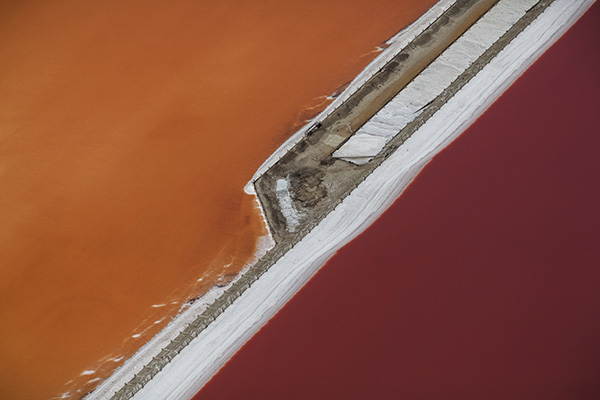 Window Seat Image – © Julianne Kost
Window Seat Image – © Julianne Kost
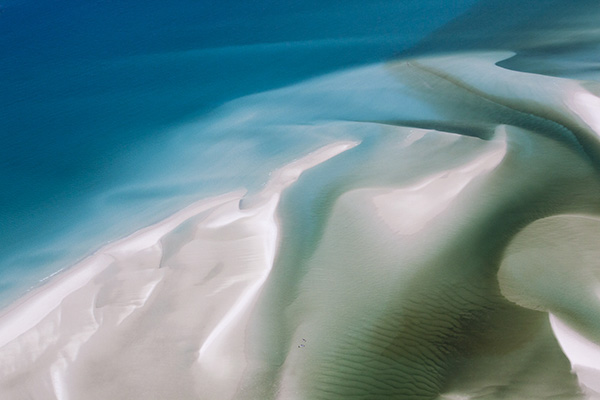 Window Seat Image – © Julianne Kost
Window Seat Image – © Julianne Kost
Julianne shares the genesis of the project, “
Shooting photographs allows me to stay sane during those long flights, because what most people don’t know is that I have a bit of a handicap when it comes to flying; I am scared to death of it. I’ve always been afraid of flying, but during one particular 20-minute bout of turbulence in the middle of the Andes years ago, I found myself white-knuckled, fingers embedded in the hard plastic armrests. It was in that instant that the camera became a comforting buffer between the reality of that moment and my own thoughts.”
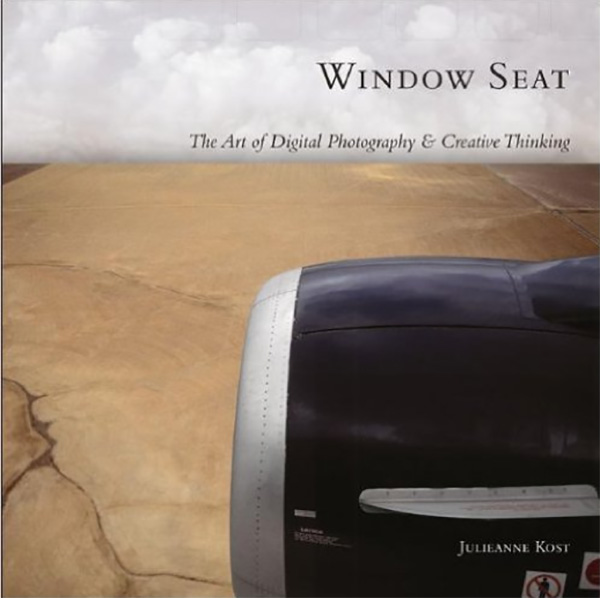 Window Seat – The Art of Digital Photography & Creative Thinking
Window Seat – The Art of Digital Photography & Creative Thinking
“I discovered that shooting pictures out of the plane window allowed me to view the scenery in a different context: not as the earth some 30,000 feet below, but as an immense, constantly scrolling image. As long as I could see the world as an image through an eyepiece rather than as a harsh, physical reality, the threat was less real. I became a spectator – an observer of the scene rather than part of it.”
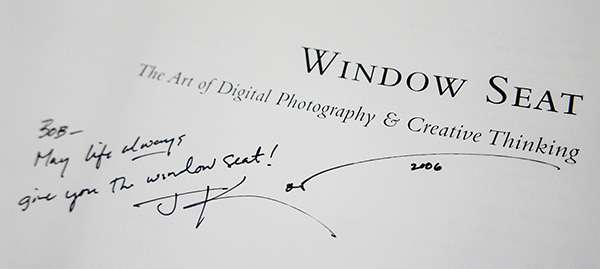 Julianne Autographed my copy back in 2006 – The book is still valid today as a learning tool
Julianne Autographed my copy back in 2006 – The book is still valid today as a learning tool
Passenger Seat
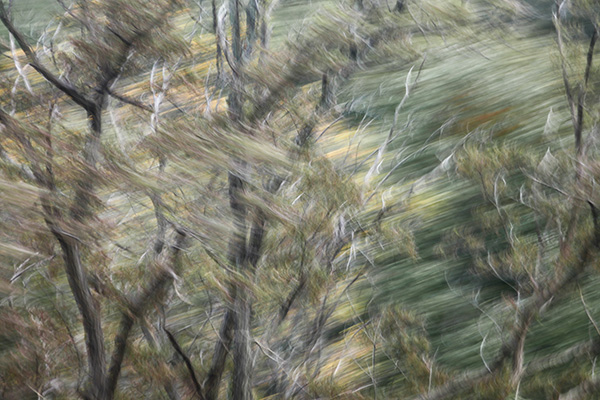 Passenger Seat Image – © Julianne Kost
Passenger Seat Image – © Julianne Kost
Julianne referred me to the Adobe blog site for more information on her Passenger Seat project where she was interviewed by Lex van den Berghe who is a Principal Product Manager on the Digital Imaging team at Adobe.
This will get you started on Lex’s interview…
Tell us more about how you got started with the Passenger Seat series. Where did the inspiration come from?
Passenger Seat, the project, started as a purely personal one as I traveled through the northeastern United States to view the leaves in fall. We drove all day looking for iconic New England landscapes, and between the small towns, I started taking images out the window of the car. At the end of the day, the images that I had made “in between” were the images that resonated with me. I found myself capturing a distinct yet ephemeral moment that was not entirely apparent or observable when the image was made, yet these photographs conveyed the mood, colors, and transient notion of fall better than anything that I had mindfully composed.
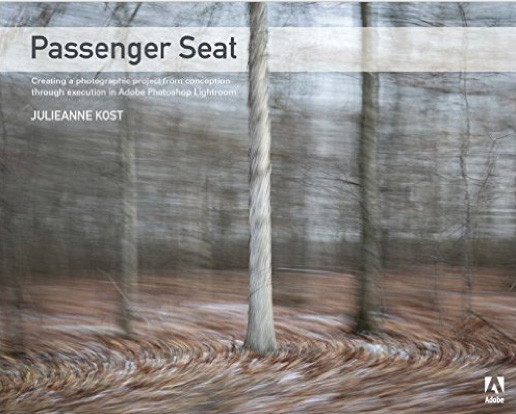 Passenger Seat – Creating a Photographic Project from Conception through Execution in Adobe Photoshop Lightroom
Passenger Seat – Creating a Photographic Project from Conception through Execution in Adobe Photoshop Lightroom
With photography so often about the obsession of capturing perfect moments and frames in crystal clear focus, can you explain what it was like to create images that seemed to deliberately go against the grain of all technical and aesthetic conventions?
It was fun! I believe we need to constantly explore different techniques and subjects in order to stay healthy and not atrophy. This project helped me continue to look at things with a new perspective, photograph what I could not see, learn how to make technology work for me, and “let go” and lose myself in the process of making images.
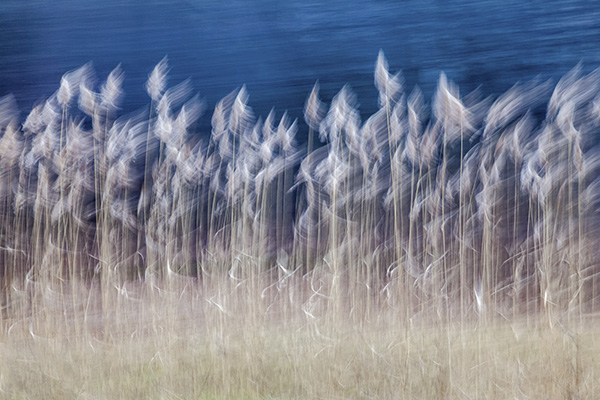 Passenger Seat Image – © Julianne Kost
Passenger Seat Image – © Julianne Kost
Continue reading the rest of the Passenger Seat blog post here…
Kost Bio
Named one of Fast Company’s “100 Most Creative People in Business,” Julieanne Kost is a Principal Evangelist at Adobe Systems, responsible for fostering relationships with customers through meaningful and inspirational Photoshop and Lightroom instruction. As a highly sought-after speaker for the industry-standard Digital Imaging franchise, she devises and presents motivating and educational training sessions, sharing original techniques and tutorials worldwide — via live events, Adobe.com, her own website (jkost.com) and blog (blogs.adobe.com/jkost). She is also the author of “Passenger Seat—Creating a photographic project from conception through execution in Adobe Photoshop Lightroom” and “Window Seat — The Art of Digital Photography and Creative Thinking”, (I have an autographed copy: Ed) an accomplished photographer and fine artist, and creator and host of the popular Photoshop CC Essential Training, Adobe Camera Raw Essential Training, and the Art of Photoshop Compositing for Lynda.com.
Kost is well-known for her unique approach to instruction, infusing practical tips and tricks with an equal amount of humor and creativity that keeps audiences entertained and engaged. She often serves as a guest lecturer at distinguished photography workshops, industry events, and leading educational institutions around the world. She’s a contributing columnist and author for a variety of print and online publications and has created over 500 instructional videos as the host of Adobe’s “The Complete Picture” featuring Lightroom and Photoshop, serves as producer and instructor of the “Lightroom Getting Started” and “What’s New in Lightroom,” training courses, as well as the “Revitalize your Workflow with Lightroom” seminar on CreativeLive.
Kost has been recognized for her outstanding service and contributions to the professional photographic industry, winning the Gerhard Bakker Award from the Professional Photographers of America, the Honorary Educational Associate Award from the American Society of Photographers and was inducted into the Photoshop Hall of Fame by the National Association of Photoshop Professionals.
The combination of her passion for photography, mastery of digital imaging techniques and her degree in psychology, makes her photographic and fine artwork familiar, yet surreal with inventive and mysterious worlds where things are not quite as they seem. Her work has been exhibited numerous times and featured on Behance.net, PetaPixel.com, thisiscolossal.com, photographyserved.com, and Photoshop.com.
Kost holds an AA in Fine Art Photography and a BS in Psychology.
Yours in Creative Photography, Bob
Save
Save
Save
Save
Save
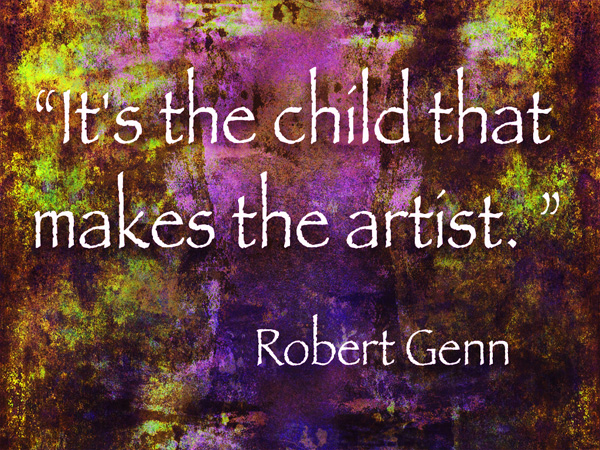
by successfulbob | photography - art quote, photography creativity, photography education
Sunday Photo/Art Quote – Robert Genn
The Painter’s Keys. An excellent twice weekly newsletter was started by Canadian artist Robert Genn. Robert is no longer with us, but the bi-weekly letter and website were carried on by his daughter Sara who is a talented artist and writer in her own right.
Robert was not only a talented acrylic on canvas artist recognized throughout the world for his work depicting the west coast of Canada, but he was also a thinker on the process of creating art. That’s why I grabbed a quote from him for use this morning.
 “It’s the child that makes the artist.” – Robert Genn
“It’s the child that makes the artist.” – Robert Genn
In my opinion, this quote is a very simple but important one. There is a tendency to loose our inner child as we grow up and into our careers. When we first try our hand at art as a child, we work with abandon and no thought of what is ‘right of wrong’ we just do. As we age, we begin to listen and be shaped by the outside world of parents and teachers and supposed friends who tell us what is wrong with our work. How we can’t make a living as artists. How we could do something better if we just did it the approved way.
To grow as artists, I suggest that we go back to that inner child now and then and just play with wild abandon. Try something new. Push boundaries. Don’t label something as good or bad but as a learning experience. I talk about this many times, but it’s a message that will help you forge new art in your life. Don’t be afraid to make mistakes. Don’t listen to people that tell your work is not up to par it doesn’t matter. Play. Play some more. Study new ideas and try to put them into practice.
![dreams_brain-scan]() From Sara Genn’s Latest Letter/Post – “Your Brain on Art’
From Sara Genn’s Latest Letter/Post – “Your Brain on Art’
Scientists ‘read dreams’ using brain scans. Rebecca Morelle, BBC science
Will this result in masterpieces immediately? Many times no. But often it can lead you down a new path to help you become a more creative individual. Picasso had a quote along similar lines, “Every child is an artist. The problem is how to remain an artist once we grow up.” – Pablo Picasso
Don’t let the world take out your inner child.
Yours in Creative Photography, Bob
PS – You can click on either link in this post to check out and subscribe to the Painter’s Keys
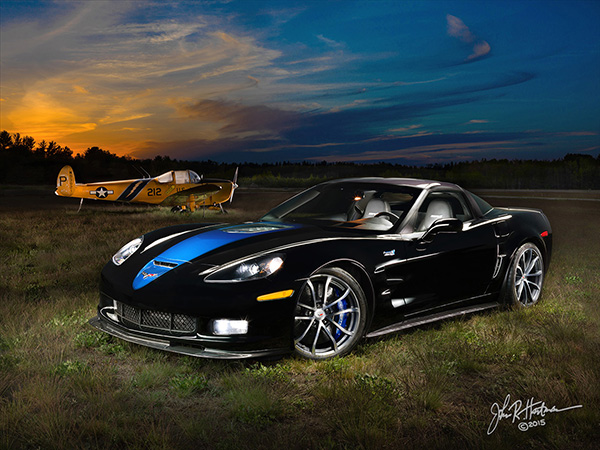
by successfulbob | photography, photography creativity, photography education, tuesday painterly photo art
Tuesday Painterly Photo Art
John Hartman, M.Photog.Cr, CPP, A-ASP, EA-ASP
Jealous.
If I have one word to share about John that would be it. I am jealous of his ability to absorb information and ideas about photography and photographic arts and then find a way to earn income from it. John has been sharing his photography and business knowledge for over thirty years and he’s still breaking new ground on a regular basis.
Throughout his 42-year professional career, this Wisconsin-based photographer has made it his life and business mission to find out what everyone is doing and then doing something different. One of his recent personal projects has been mastering the art, science, and business of the technique of painting with light. Exposing dozens or sometimes hundreds of separate shots with continuous LED lights and then blending them together in Photoshop, a light painted photograph simply looks like no other image.
 All images in this post are © John Hartman. Light painted art.
All images in this post are © John Hartman. Light painted art.
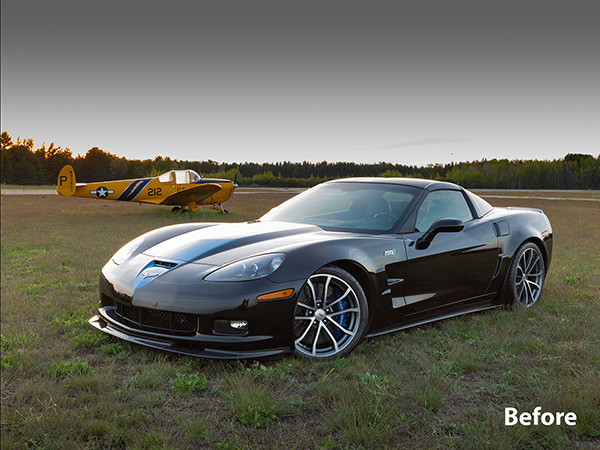 Before Light painting
Before Light painting
Once the process was mastered, he began testing the commercial viability of this new product. Clients have responded enthusiastically, resulting in commissions that include images up to 10 feet long and sales that often reach into five figures. Subjects include automobiles, jewelry, food, architecture, motorcycles, musical instruments, farm tractors and aircraft. His clients include corporations, collectors, hobbyists, enthusiasts and others who own and appreciate the finer things of life.
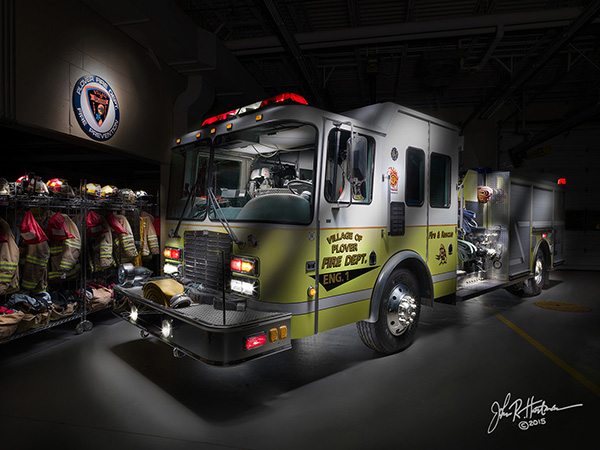 Light Painted Fire Truck in station
Light Painted Fire Truck in station 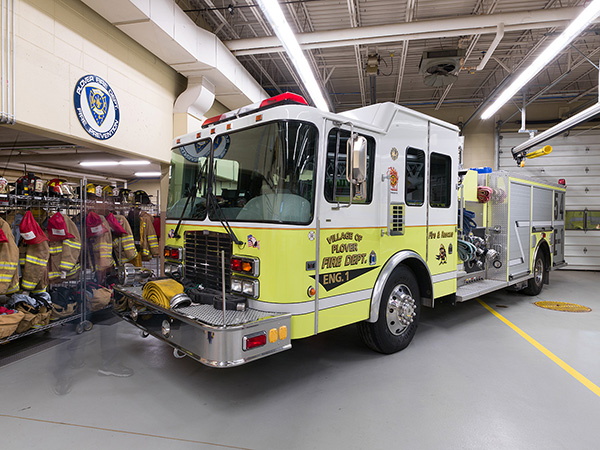 Single Capture of firehouse
Single Capture of firehouse
One of his light paintings of a Ferrari F12 Berlinetta was chosen as a Grand Imaging Award finalist at Imaging USA in 2015, and was also included in the 2015 World Cup Photographic Competition.
Interestingly, nearly 100% of John’s light painting clients are males, who are proud of their ‘babies’ and are willing to invest whatever it takes for a unique image for their office, home, garage or man cave.
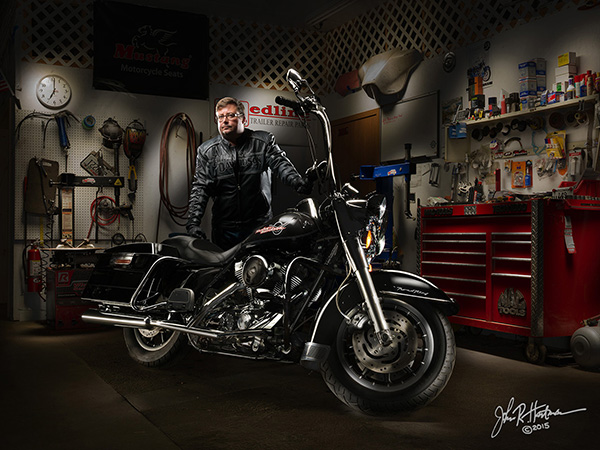 Motorcycle Garage Light Painting
Motorcycle Garage Light Painting 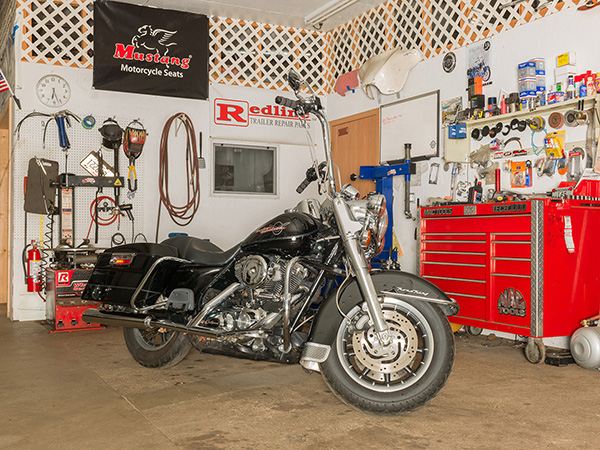 You got it. This is before!
You got it. This is before!
“The process of painting with light is neither simple nor intuitive,” says Hartman. “The high skill level required ensures the look will remain unique and will not be bastardized or diluted by a set of actions or plug-ins. The photographer willing to invest the time and effort required to become proficient in light painting can develop and retain 100% of that lucrative business in their market area.”
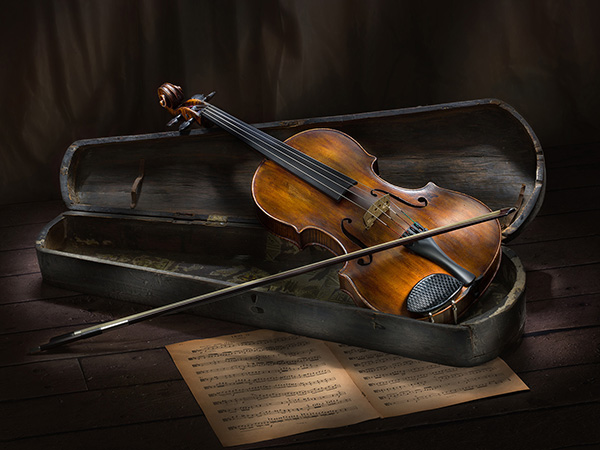 Violin & case Light Painting
Violin & case Light Painting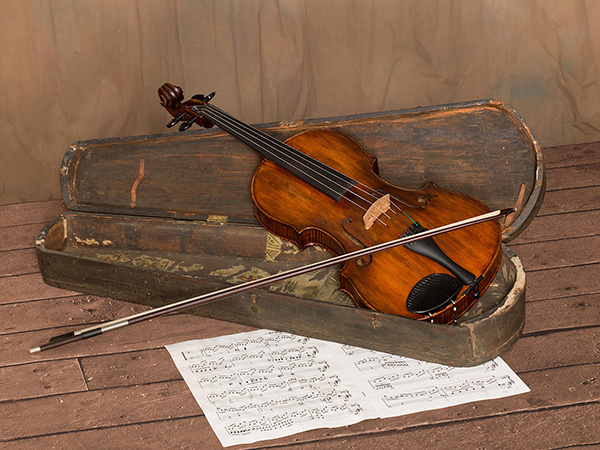 The violin looks just a wee bit different in the before image
The violin looks just a wee bit different in the before image
John is currently experimenting with an unmanned aircraft vehicle (a drone) using a mounted LED to light paint larger subjects such as buildings, landscapes and large vehicles such as farm implements and fire trucks.
You can see a short video showing him light painting a 1957 Lincoln Continental Mark II here.
Photographers have taken notice of John’s work, and requests to learn his process have resulted in a four-city tour titled The John Hartman Light Painting Workshop, to be held in his hometown of Stevens Point, WI, as well as in Pittsburgh, Seattle, and Sedona, AZ (hosted by Bob Coates). Click here for more information.
Yours in Creative Photography, Bob
Save
Save
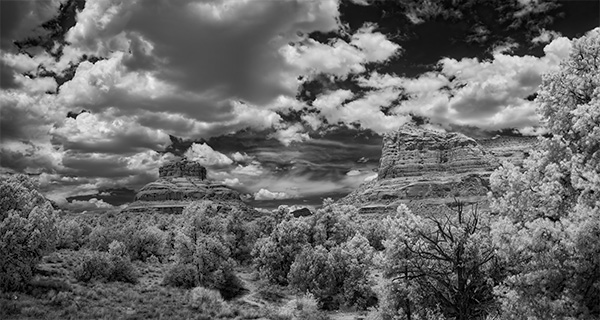
by successfulbob | black & white, HDR photography, infrared photography, landscape photography, Lumix G6, Lumix Lounge, photography creativity
Infrared Photography Panorama Style
“The sailing clouds went by, like ships upon the sea.” — Henry Wadsworth Longfellow
Clouds scudding across the azure skies. Words can take you to some beautiful places but as the Chinese say, a picture is worth a thousand words. That’s why I keep an eye peeled on the sky. When the clouds start racing, or even lumbering through the red-rock country of Sedona I grab a camera because interest is added to the scene.
Even if it’s mid-day, I grab a camera and head outdoors. My camera of choice for these times is infrared. I enjoy the high contrast black and white rendering of clouds rendered against a deep dark sky. A Lumix G6 was converted by LifePixel and it has expanded my shooting times as infrared shines when it’s time to put the camera up for regular color photography. I used the Kit lens that came with the camera and was pleasantly surprised at the solid quality of the captures. (G Vario 14-42mm f3.5-5.6) It makes for a super light-weight combo.
 Bell Rock Vista in Sedona – Infrared Panoramic image with Courthouse Butte
Bell Rock Vista in Sedona – Infrared Panoramic image with Courthouse Butte
I tend to try to push the envelope and experiment when I’m on self-assignment. In yesterday’s adventure, it was to add panorama to infrared. It took quite a bit more work. I’ll let you be the judge to see if it was worth it.
Five images overlapping by about 40% were captured. With the camera set to black & white, three exposures one stop apart were saved in jpeg format to ensure detail in highlight and shadow areas once they were processed. Each set of three images were treated in Aurora HDR software.
 Screenshot of images used before processing
Screenshot of images used before processing
Each of the final five images was loaded into Adobe Photoshop to process the panorama. Whoops! That was an unusual fail. Could be the handheld capture caused some extra deformity in the files. Usually, I can depend on Photoshop to render a solid panorama but with this set of images, there was way too much distortion in the resulting output. (I’ll experiment with these files again when I have some more time and see if different rendering intent might be of help) I couldn’t find my AutoPano Pro software on this computer so I resorted to having Photoshop load all the files into Layers and added my own Masks blending the images together by hand. It’s good to remember the ‘Old School’ methods when the automatic software options aren’t there for you.
Yours in Creative Photography, Bob
PS – Another cloud description I enjoy. “Clouds hastening like messengers through heaven.” —John Hall Wheelock
PPS – Cloud quotes referenced in this post were found in The Free Dictionary by Farlex. I’m book-marking that page for future reference!
Save
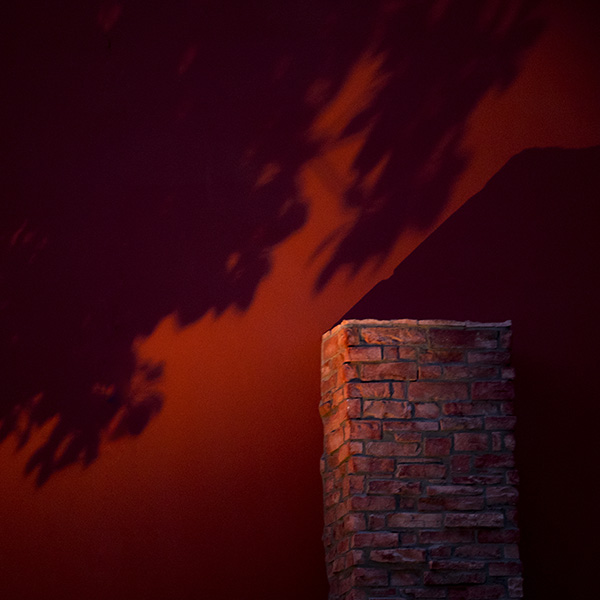
by successfulbob | Lumix GX8, Lumix Lounge, musician photography, photographer of musicians, photography, photography - art quote, photography creativity, photography education
Sunday Photo/Art Quote – Yogi Berra
A major league baseball manager, Yogi Berra, was a font of excellent one-liners that more than stated the obvious.
The one I wish to share with you today can easily be applied to the arts. Yes, while it’s obvious, sometimes we need reminders of just that. And Yogi was a pro at that!
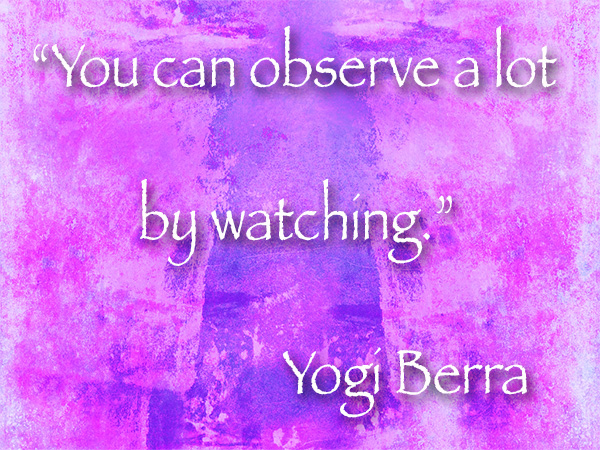 “You can observe a lot by watching.” Yogi Berra
“You can observe a lot by watching.” Yogi Berra
The reason I bring this up today is the quote jumped out at me after returning from a guitar concert under the stars last night by Anthony Mazella at The Collective in Sedona. Anthony is a world class musician who creates magical times with his guitar.
As always I carry my camera. Lately, I’ve been trying to follow Yogi’s advice although I didn’t realize it was coming from him. I’ve been trying to be more aware of light. Paying attention to it. And trying to capture more of it in challenging situations.
I used the Lumix GX8 with a 35-100mm f2.8 Vario lens. While Anthony filled my head with his music, I kept myself aware of the changing light as the sun dropped below the horizon. The lights in the area began their illuminating dance through the venue. And I recorded.
Here are a few of those captures.
 Shadow, color, composition, shape, and form were the things that caught my eye
Shadow, color, composition, shape, and form were the things that caught my eye
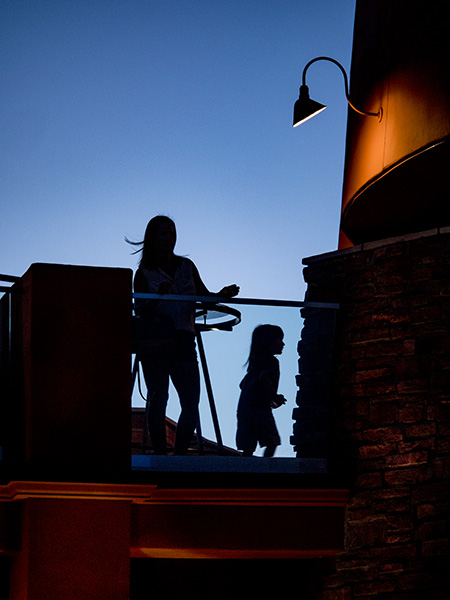 A glance up and this silhouette appeared. I watched for a few moments, and the little girl was moving in and out of the frame I waited until she was moving out to capture this. The play of the complementary colors was a bonus.
A glance up and this silhouette appeared. I watched for a few moments, and the little girl was moving in and out of the frame I waited until she was moving out to capture this. The play of the complementary colors was a bonus.
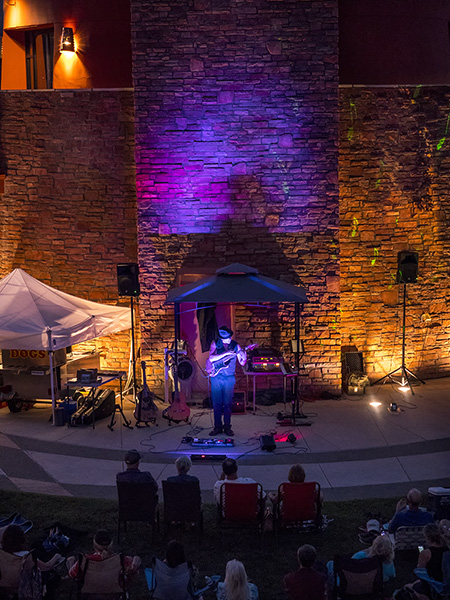 Of course, the star of the show couldn’t be left out. The blue, purple and magenta lights added some serious color to the warm toned brickwork.
Of course, the star of the show couldn’t be left out. The blue, purple and magenta lights added some serious color to the warm toned brickwork.
Had I not been aware and keeping my eyes peeled for an opportunity to see I might have missed these little vignettes of light and color. So remember Yogi’s advice, “You can observe a lot by watching.”
Yours in creative Photography, Bob
PS – Here are 50 Yogisms gathered in an article by USA Today. It’s a fun read.
Save
Save
Save
Save
Save
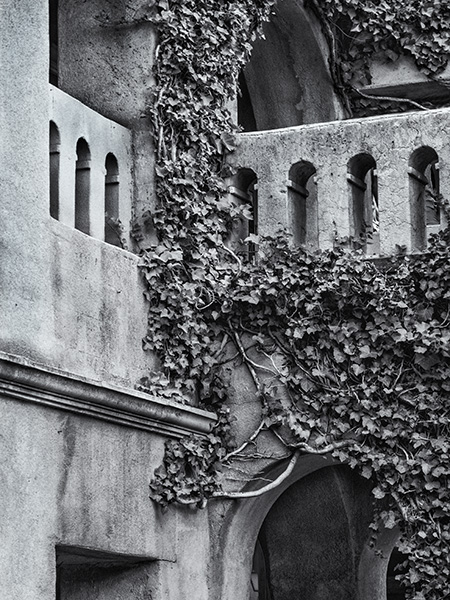
by successfulbob | architectural photography, black & white, Lumix GX8, photography, photography creativity, photography gear
Processing Black & White Photography
Ansel said it.
He likened great photography to a concert. The Print is the performance. The capture is merely the score.
OK. Maybe I paraphrased a little bit but the idea is there. And the word ‘merely’ is undercutting the value of the capture. But, by virtue of the camera only having one opening it can only see so much density in a single exposure. How we process the image is a huge part of the success or failure of the photo.
We now have some technological advantages over Adams with software that allows up to combine multiple images t different exposures to expand the amount of information we can have in a single file. We can build up density and exposure in a picture without resorting to chemistry changes as Adams did. In addition to Curves and Levels, we now have the ability to add luminance masks to target very specific tones within the photo. Sharpening can be selectively applied throughout the image to help move a viewer’s attention through the image. And more. We are in a golden age of photography should we choose to follow the possibilities.
I was attending a little courtyard guitar concert at Tlaqapaque in Sedona and just happened to have a camera with me. (imagine that!) Here are a couple grabs where the image definitely has more power in black and white.
 Tlaqapaque detail. Mexican shopping Village in Sedona, AZ
Tlaqapaque detail. Mexican shopping Village in Sedona, AZ
Images processed in Adobe Camera RAW & Nik Silver FX Pro 2 (You can get this software plugin for free)
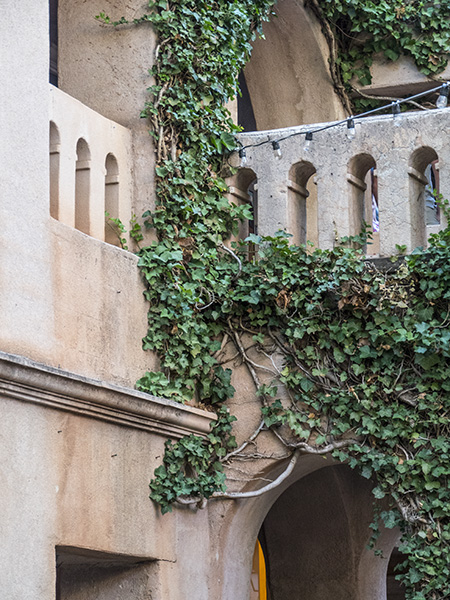 Original capture
Original capture
Images captured with Lumix GX8 with 14-140mm f3.5-5.8 lens
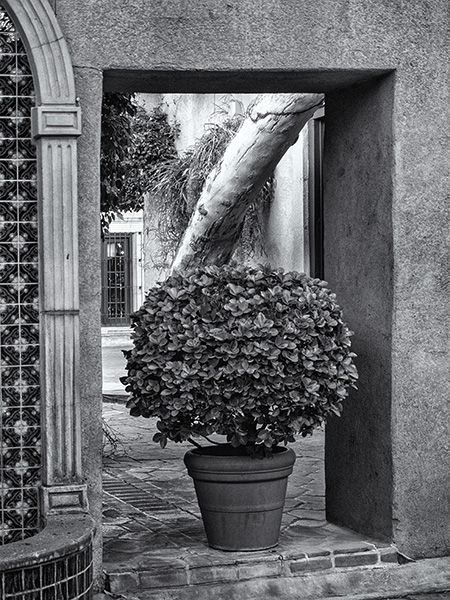 Portals within portals within portals add depth and dimension to an image
Portals within portals within portals add depth and dimension to an image
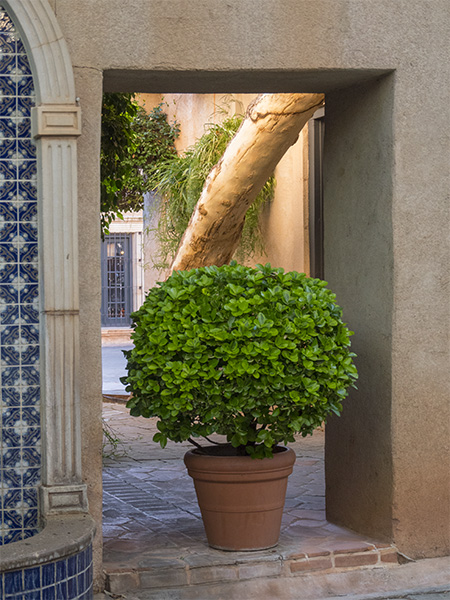 Original capture
Original capture
I’ll be doing a more in-depth blog post on black and white processing on LifePixel’s website. You can look for it early next week.
Yours in Creative Photography, Bob
Save
Save

 Window Seat Image – © Julianne Kost
Window Seat Image – © Julianne Kost Window Seat Image – © Julianne Kost
Window Seat Image – © Julianne Kost Window Seat – The Art of Digital Photography & Creative Thinking
Window Seat – The Art of Digital Photography & Creative Thinking Julianne Autographed my copy back in 2006 – The book is still valid today as a learning tool
Julianne Autographed my copy back in 2006 – The book is still valid today as a learning tool Passenger Seat Image – © Julianne Kost
Passenger Seat Image – © Julianne Kost Passenger Seat – Creating a Photographic Project from Conception through Execution in Adobe Photoshop Lightroom
Passenger Seat – Creating a Photographic Project from Conception through Execution in Adobe Photoshop Lightroom Passenger Seat Image – © Julianne Kost
Passenger Seat Image – © Julianne Kost




























